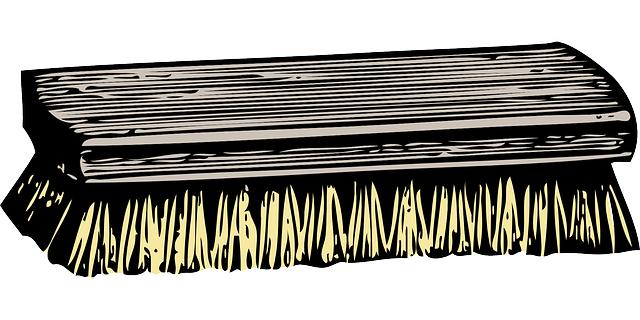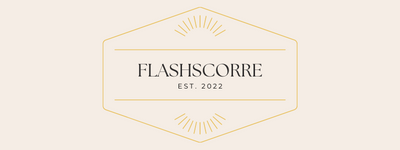In the realm of kitchen cleanliness,where every dish and utensil tells a story of culinary adventures,the humble dish brush stands as a silent yet powerful ally. As households increasingly turn to enduring practices, a captivating duel has emerged on this unassuming stage: eco-friendly dish brushes versus their traditional counterparts. In this article,we’ll delve into the scrubbing power face-off,exploring the dynamic features,materials,and effectiveness of both options. Will the sustainable choices triumph in performance, or does the time-tested traditional brush still reign supreme? Join us as we scrub away the grime to uncover the true champions of dishwashing duty.
Exploring the Materials Behind Eco and Traditional Dish Brushes
When it comes to dish brushes, the materials used play a crucial role in both performance and environmental impact. Traditional dish brushes frequently enough incorporate **plastic bristles** and **synthetic handles**, which provide effectiveness in scrubbing but come at a significant environmental cost.They contribute to landfill waste and can take hundreds of years to decompose. On the other hand, eco-friendly alternatives typically utilize **natural materials** such as **bamboo**, **coconut fibers**, and **horsehair**, making them biodegradable and more sustainable options. These brushes not only minimize environmental harm but also offer a unique aesthetic and a connection to nature, appealing to consumers increasingly conscious about their ecological footprint.
Comparing the two options, one can discern notable differences in durability and efficacy.Eco brushes are frequently enough crafted from **renewable resources**, allowing them to last through numerous wash cycles while maintaining their scrubbing power. In contrast, traditional brushes may have a shorter lifespan due to wear and tear on plastic bristles. Here’s a rapid overview of some common materials used in both types of dish brushes:
| Material | Characteristics |
|---|---|
| Plastic Bristles | Durable but non-biodegradable; frequently enough harsh on delicate cookware. |
| bamboo Handle | Lightweight, moisture-resistant, and biodegradable. |
| Coconut Fiber | Natural scrubbing power; gentle on surfaces and eco-friendly. |
| Horsehair | Soft bristles great for delicate items; biodegradable. |

Scrubbing Performance: A Comparative Analysis of Cleaning Efficiency
The scrubbing efficiency of eco-friendly dish brushes largely depends on the materials used in their construction. Many eco brushes are made from sustainable fibers such as agave, coconut husk, or bamboo, which provide strong abrasion while remaining gentle on delicate surfaces. These natural materials are designed to tackle tough grime while being biodegradable. In contrast, traditional dish brushes often utilize synthetic bristles, which can sometimes be less effective in scrubbing compared to their eco counterparts. The rigidity of synthetic bristles can lead to greater damage on sensitive items but may achieve a deeper clean on sturdier surfaces.
In a side-by-side evaluation, the performance of both brush types reveals interesting dynamics. The following table summarizes key attributes relevant to cleaning efficiency:
| Brush Type | Scrubbing Power | Surface Safety | Eco-friendliness |
|---|---|---|---|
| Eco Brush | High | Excellent | 100% Biodegradable |
| Traditional Brush | Moderate | Average | Non-biodegradable |
The choice between eco and traditional brushes ultimately shapes your kitchen routine, impacting not only the effectiveness of dish cleaning but also aligning with personal values regarding sustainability. Users who prioritize gentle care for their dinnerware while maintaining a low environmental footprint may gravitate towards eco-friendly options,while those focused on heavy-duty performance might prefer the familiar grip of traditional brushes. Understanding these nuances empowers consumers to select the best fit for their cleaning needs.

Sustainability Matters: Environmental Impact of Dish Brush Choices
When it comes to choosing a dish brush, the materials and manufacturing processes play a crucial role in determining their environmental footprint. Eco-friendly options often feature natural bristles made from materials like Agave or Bamboo,which are biodegradable and sourced responsibly. In contrast, traditional dish brushes commonly utilize synthetic bristles crafted from plastics such as nylon or polyester. even though these materials may offer durability and effective scrubbing power, their persistent presence in landfills contributes significantly to ocean pollution and wildlife hazards. By opting for sustainable brushes, consumers can actively support a cleaner planet and reduce plastic waste.
Additionally, the life cycle of dish brushes has a profound impact on sustainability. Eco-friendly brushes, often designed to be compostable, break down naturally after their use, typically lasting just as long as their synthetic counterparts. Understanding the implications of production and disposal can guide conscious consumers in making choices that align with their environmental values. Here’s a comparative overview:
| Feature | Eco-Friendly Brush | traditional Brush |
|---|---|---|
| Materials | Natural Fibers (e.g., Agave, Bamboo) | Synthetic Fibers (e.g., nylon, Polyester) |
| Biodegradability | Yes | No |
| disposal | Compostable | Landfill |
| Environmental Impact | low | High |
Making mindful choices regarding the tools we use in the kitchen is essential for fostering a sustainable lifestyle. By understanding the environmental consequences of our dish brush options, consumers can opt for more responsible products that not only clean effectively but also protect our planet’s resources for generations to come.

User Experience and Longevity: Which Brush Holds Up Over Time?
the longevity of dish brushes can significantly impact both user experience and kitchen efficiency.When comparing eco-friendly options with traditional brushes, it becomes essential to consider how each type performs over time. Eco brushes are typically made from biodegradable materials that may not always withstand rigorous scrubbing sessions and also their plastic counterparts. however, they often feature sturdy bristle designs aimed at durability while prioritizing sustainability. Users may appreciate the subtle balance of performance and responsibility, giving eco brushes a favorable run in terms of long-term usability, provided they are maintained properly.
On the other hand, traditional brushes made from synthetic materials have been known to exhibit remarkable endurance. One of the definite advantages of these brushes lies in their resistance to wear and tear, making them suitable for heavy-duty cleaning tasks. To illustrate the differences,here’s a brief comparison of key features:
| Feature | Eco Brush | Traditional Brush |
|---|---|---|
| Material | Biodegradable | Synthetic |
| Durability | Moderate | High |
| Maintenance | Requires care | Low maintenance |
| Environmental Impact | Low | Higher |
As users seek the most effective cleaning tool,understanding the balance between longevity and user experience becomes crucial. While eco brushes contribute positively to environmental consciousness, traditional brushes boast resilience, making them a staple in many kitchens. Evaluating personal priorities will ultimately guide users in selecting the brush that best suits their needs.
The Conclusion
As we hang up our dishwashing gloves and put the brushes back in their holders, it’s clear that the battle between eco-friendly and traditional dish brushes is more than just a clash of bristles—it’s a reflection of our values and priorities in the kitchen and beyond. Each side offers distinct advantages, whether it’s the sustainable touch of natural fibers or the reliable durability of synthetic materials.
Ultimately,the choice comes down to personal preference and the unique needs of your home. By weighing the scrubbing power, environmental impact, and cost-effectiveness of both options, you can find the perfect companion for your dishwashing routine. As we move towards a greener future, every decision, even the small ones like our choice of dish brush, can contribute to a larger wave of change. So, scrub on with confidence, knowing that you hold the power to make a choice that reflects your commitment to both cleanliness and sustainability. Happy washing!


